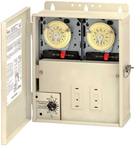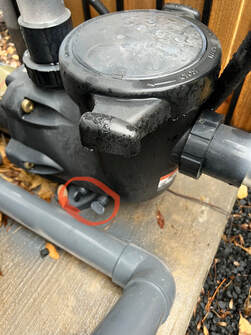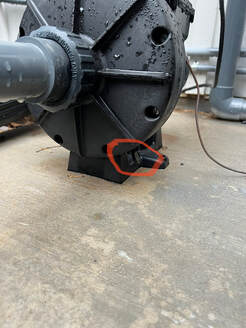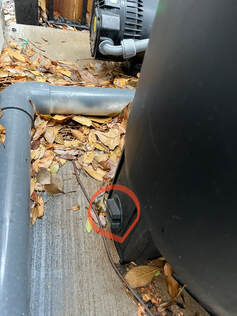 Is your pool ready to survive freezing temperatures? Here are some practical ways to protect your pool and equipment from expensive freeze damage: I want to start out by saying this is not a step by step manual for freeze protecting your pool. Every swimming pool is set up differently so a method that works with one pool may not be the right one for your pool. In some climates swimming pools have to be completely winterized for the season. This article does not cover complete winterization. For swimming pools in mild climates where temperatures occasionally drop below freezing, pool owners may be less familiar with what to do to avoid freeze damage. This article is meant to get you thinking about your pool and to present the basic principles and some methods that can be used to protect pool plumbing and equipment from damage from occasional low temperatures. One Keep the water circulating. Moving water won't freeze. If your pool was built by a reputable pool builder, the controls for the equipment will include a freeze protection mode. This could be as simple as a time clock with freeze protect as shown int the picture here, or an internet connected electronic control center with programmable freeze protect modes that you can control from your phone. In freeze protect mode, when the temperature drops below a set temp this feature turns the pumps on when the temperature drops below the set point. The circulation of the water through the pipes and the heat form the pumps protect the equipment pipes from freezing. If you don't have a freeze protect function, you can manually run your pumps during freezing temperatures. Two When the temperatures dip below freezing for long periods, putting a tarp over the equipment, and even adding a heat source like a light bulb, can further protect the equipment and plumbing from freezing and expensive repairs. Care should be taken that the heat source is not touching or close to the tarp or blankets as this could be a fire hazard. Three If there is an extended power outage, then the built-in freeze protect systems will be defeated. You can add a back up generator, of the proper wattage, to your home in order to keep those protections in place if the power goes down. Four If a whole house generator is not in the budget, covering the equipment with a tarp or blanket of some sort and using a small generator to power the heat source like a light bulb, or electric heater can protect the equipment and plumbing from freezing. Again extreme care should be taken that the heat source is not touching or close to the tarp or blankets as this could be a fire hazard. We do not recommend using a heat source with an open flame like propane or kerosene because of the potential fire hazard. Five If back up power is not an option, each piece of pool equipment, pumps, filters, heaters, etc. should have a drain plug that can be removed to protect from damage due to freezing. Some swimming pools are built with the pool equipment set lower the water level this method will not be an option. Before removing freeze plugs the circuit breakers should be shut off so when the power comes back on, the pumps will not run without water. You can find information on where the drain plugs are located on your specific equipment online on the manufacture's website. This may be difficult for the average person to do, especially in the middle of the night, so this method requires some pre-planning and anticipation of the power going out. This should protect the equipment, however. Depending on how your system is plumbed, the piping may still be vulnerable to damage from freezing. Some common freeze plugs are pictured below.
0 Comments
|
authorMerrill Spencer CBP Archives
August 2023
Categories |



 RSS Feed
RSS Feed